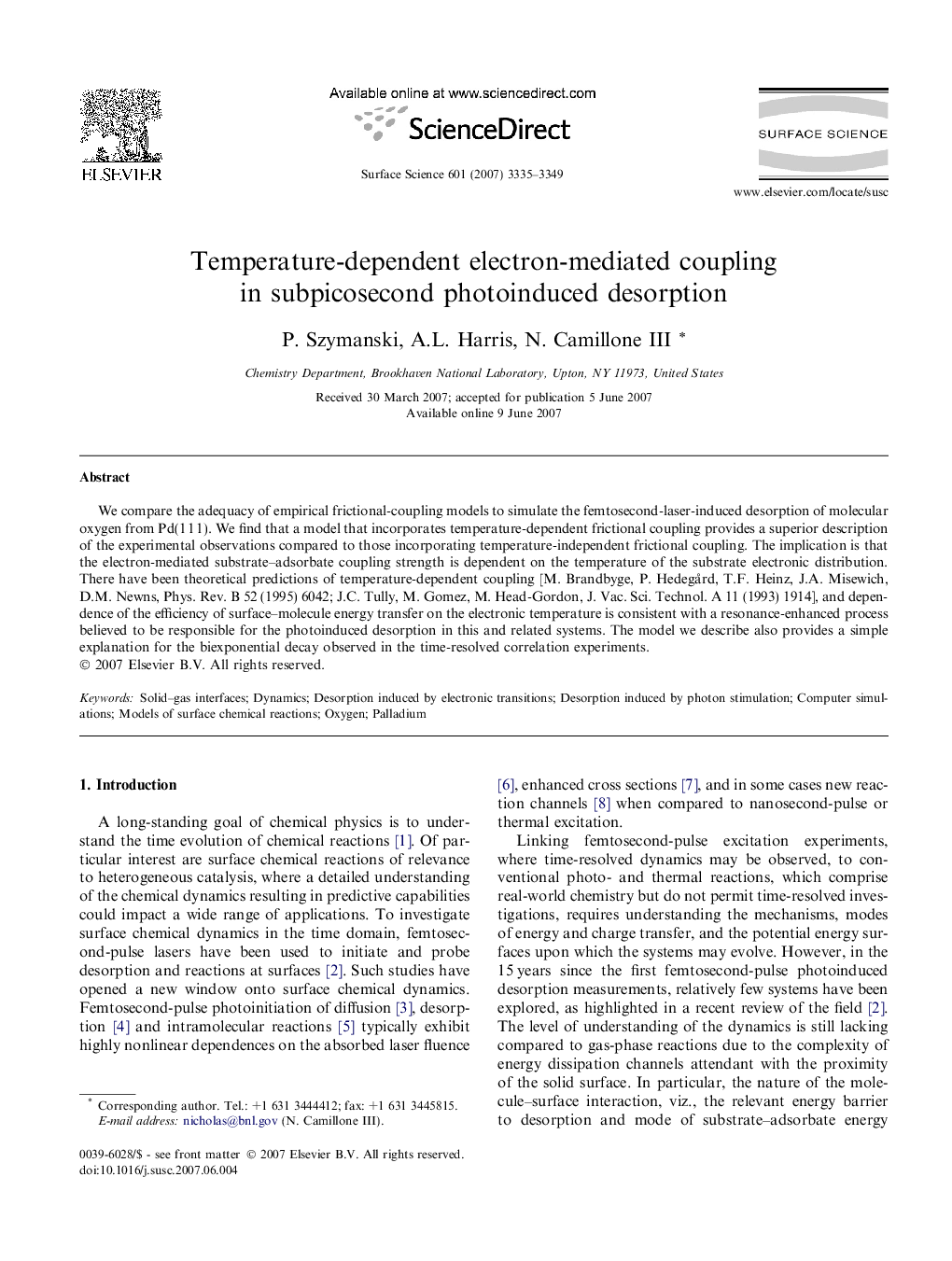| Article ID | Journal | Published Year | Pages | File Type |
|---|---|---|---|---|
| 5425860 | Surface Science | 2007 | 15 Pages |
We compare the adequacy of empirical frictional-coupling models to simulate the femtosecond-laser-induced desorption of molecular oxygen from Pd(1 1 1). We find that a model that incorporates temperature-dependent frictional coupling provides a superior description of the experimental observations compared to those incorporating temperature-independent frictional coupling. The implication is that the electron-mediated substrate-adsorbate coupling strength is dependent on the temperature of the substrate electronic distribution. There have been theoretical predictions of temperature-dependent coupling [M. Brandbyge, P. Hedegård, T.F. Heinz, J.A. Misewich, D.M. Newns, Phys. Rev. B 52 (1995) 6042; J.C. Tully, M. Gomez, M. Head-Gordon, J. Vac. Sci. Technol. A 11 (1993) 1914], and dependence of the efficiency of surface-molecule energy transfer on the electronic temperature is consistent with a resonance-enhanced process believed to be responsible for the photoinduced desorption in this and related systems. The model we describe also provides a simple explanation for the biexponential decay observed in the time-resolved correlation experiments.
